I'm building a circuit to control a flip dot display, which is basically a matrix of solenoids which you control with bidirectional current across the 25 columns and 7 rows of the board.
The attached schematic shows the circuit so far - I'm using a bank of H-Bridges to control the columns, and they switch polarity depending whether I want to flip a particular dot one way or the other.
The challenge comes with controlling the rows, at the bottom of the image. If I'm targeting a particular row, the positive voltage has to go down one path, and the negative down another. So I imagine I'm looking for a bidirectional DC solid state switch that can handle a peak of about .5A.
Any suggestions on how I should implement that part of the circuit? Electromechanical relays are not good because these switches will be used thousands of times a day (in a clock). I also need to be able to handle up to 0.5A.

Edit: I've added a more accurate schematic for the flip dot board (25 columns, 7 rows)

update:
Thanks to all the ideas folks contributed to help me solve the problem. I finally finished the flip-dot clock project - you can check it out at http://www.dhenshaw.com/dottie
If there's interest I'll post a schematic of what I built (I'd also have to draw it first!)

